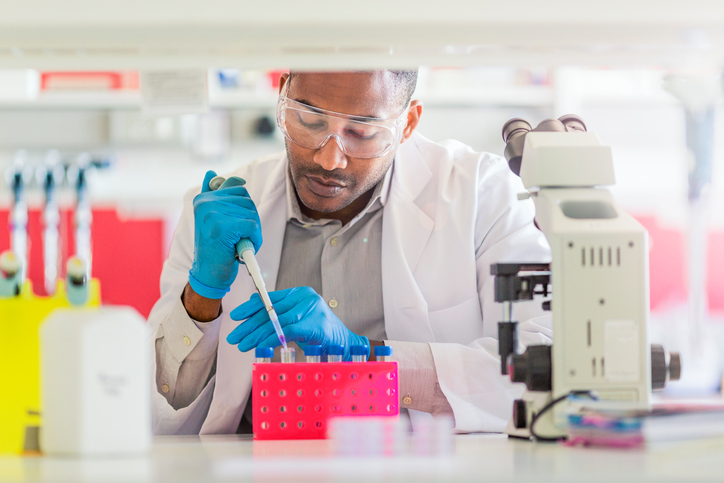Look at Me. How We Deal with the Lab Tech Shortage

By Barbara Connell | October 17, 2018
Data that comes from the lab drives more than two thirds of the decisions made by physicians.¹ For much of my career, I remained in my area of the building, out of sight from patients or even the physicians and nurses. Yet, the work I was doing probably had the biggest impact.
I loved science and healthcare so what better way to bring them both together than to become a medical technologist. The work that I did performing diagnostic tests that would help the physicians to determine a patient’s diagnosis or tell if treatment was effective made me feel like an intricate part of the healthcare team. Patients generally only know the lab by the phlebotomist that draws their blood or by the request for a specimen from a doctor or nurse “sent” to the lab. Little did they know that there was a team of highly educated and trained laboratory professionals making sure that every lab result was accurate and delivered in a timely manner.
So this is why I’m really concerned about those critical tests determining a patient’s complete blood count or molecular diagnostic infectious disease test. The University of Cincinnati put together a nice infographic highlighting the troubling trend with medical technologists and scientists. Each year, 12,000 new lab professionals are needed, but only 5,000 graduates will enter the workforce. That is a major gap.
And the gap will get bigger…
Like many of the new challenges in healthcare, much of it stems from our baby boomer population. They not only need medical attention, but they need tests run to determine whether they have diabetes or cancer.
And the pay is a problem…
New lab tests are being created. We’re seeing innovation, and it’s exciting. Techs and scientists are being asked to do more and have the skills to meet the demand. The U.S. News & World Report salary outlook isn’t promising. The average base pay for a medical technologist is under $60,000 a year. There’s a long list of jobs that make more than that a year and they don’t require the education a lab tech does.
But we need to pay attention…
It’s clear the need for laboratory professionals is growing and as the population ages, the demand will only become greater. Working as a medical technologist is hard. We deal with heavy workloads, demands for shorter turn-around-times and analyzers, automation and IT solutions that are more sophisticated.
But, it is also very rewarding. Think about finding that leukemic cell or identifying the cause for a child’s meningitis or even rapidly delivering results that can help determine treatment of a septic patient. Who wouldn’t find that rewarding? Laboratory professionals also have a whole range of opportunities outside of the clinical lab — lab information systems, lab utilization consult, hospital administrator, or a role in industry as a clinical specialist.
My hope is everyone can recognize the work being done in this often hidden, but important part of a hospital that not only delivers results but can lead to solutions.
While clinical labs are under pressure to generate revenue and reduce overall costs, solutions are available to help balance the need for quality and the demand for saving and efficiency.
Source:
1. The Medical Laboratory Scientis Personnel Shortage and the Future of Lab Medicine. https://cahsonline.uc.edu/resources/mls/infographics/the-medical-laboratory-scientist-personnel-shortage-and-the-future-of-lab-medicine/. Accessed Sept. 26, 2018.
Barbara Connell
Director of Medical Affairs
Barbara Connell has over 20 years’ experience as a medical technologist working specifically in the areas of microbiology, hematology and blood banking. Connell also has 15 years of experience in the IVD laboratory diagnostics business.
